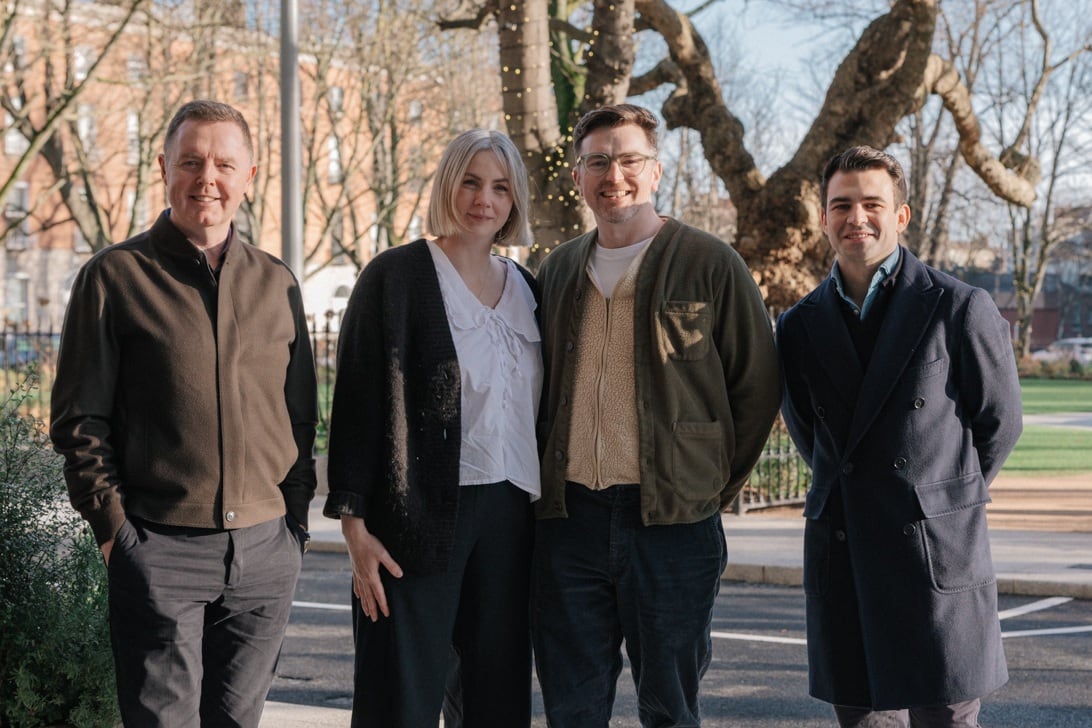Reading a 1980s memoir, by the late Sunday Press journalist Bill Kelly, recently, I was struck by an old phrase he used: “trí coiscéim na marbh”.
It means “three steps with the dead” and I only knew it was old because Kelly said so. In fact, he was writing about a different funeral custom of his Dublin youth, which he believed had roots “in the trí coiscéim na marbh of long ago”.
Intrigued, I looked the phrase up in its Irish and English forms, mostly in vain. Neither version seems to have featured in the 163-year history of this newspaper’s archive, for example.
And not even Google seems to have heard of the Irish expression, as spelt. But it turns out that Kelly was not entirely alone among book authors in knowing it.
READ MORE
Among a total of six Google hits for the English version, five involved the same quotation from Jamie O’Neill’s 2001 novel At Swim Two Boys: “A wedding left the church and, meeting a funeral, walked three steps with the dead.”
Meanwhile in the vasty depths of the Irish Newspaper Archives, with a database going back to the 18th century and including the Freeman’s Journal as well as many provincial titles, I found a single incidence of either version - the Irish.
That was in a 1973 feature on “Laois Folklore” in the Leinster Express and an odd story in its own right. It concerned a funeral from decades earlier in Kilvahan Churchyard, for which the cortege had a choice of two approach roads.
Not knowing which it would take, locals assembled on a hill overlooking both. And when they saw the burial party appear on one, they hastened down that side “for the customary trí coiscéim na marbh, ie to accompany (for even a short distance) the corpse to its final resting place”.
But when they reached the road, the funeral had disappeared. Returning mystified to top of the hill, they had to wait another hour for the actual cortege. Then they attended the burial, no wiser as to what they had witnessed earlier.
Getting back to Bill Kelly, who as “Big Bill” wrote a long-running Sunday soccer column from 1953 to the 80s, he had grown up in the “slums” - his description - of Dorset Street, in Dublin’s north inner city.
And it was in remembering the first funeral he ever attended, horse-drawn, when as a special treat he was allowed to sit “on the box seat” beside the jarvey, that he mentioned the related ritual.
In that, the procession took “the traditional three trips around the block, a custom having its origin I believe in the trí coiscéim na marbh”.
No doubt that was the origin, although I’m reminded of a similarly old ritual in the same part of Dublin with more diabolical significance. It involved the former St Mary’s Chapel of Ease, better known as the “Black Church” (although long deconsecrated and reinvented as an office block).
The building’s supposed blackness has a geological explanation. Architect John Semple used a native limestone called calp, which turns dark in the rain.
But the sombre appearance, and the fact that the church forms an island in the road, may have helped spawn the legend that if you ran around it three times at midnight, you would meet the devil.
The poet Austin Clarke grew up nearby and knew the story. His 1962 memoir, tempting fate but erring on the safe side, was called Twice Round the Black Church.
James Joyce, who also lived locally, embellished the occult connection in Ulysses. In a dream sequence set in Monto, he had Leopold Bloom up in court accused of moral delinquencies including “a form of clandestine marriage with at least one woman in the shadow of the Black Church.”
Happily, Bill Kelly’s triple bypass during that 1920s funeral did not encounter anything devilish. His worst trauma that day was being plied with “the inevitable arrowroot biscuits and raspberry cordial” while waiting for the adults during the public house pitstops that were also part of the journey to and from the cemetery.
As for the “trí coiscéim na marbh”, it undoubtedly was an old custom but perhaps not unique to this part of the world. A Google search also directed me to the website of one Sadhguru, a Hindu mystic and best-selling author from Mysore.
In the interests of spiritual growth, he advises followers to attend a funeral or cremation in his home country. If they do, he also suggests that they follow the ancient Indian custom and walk “at least three steps” with the body.











